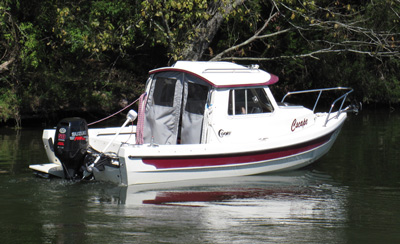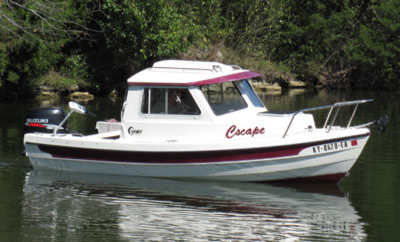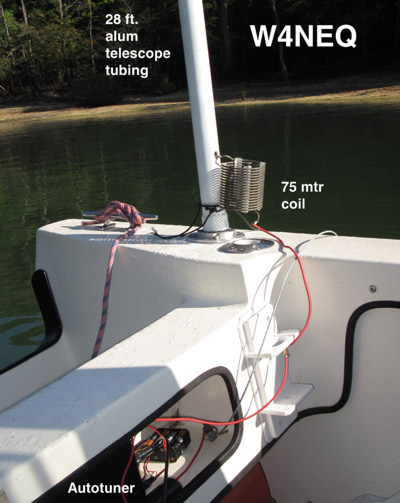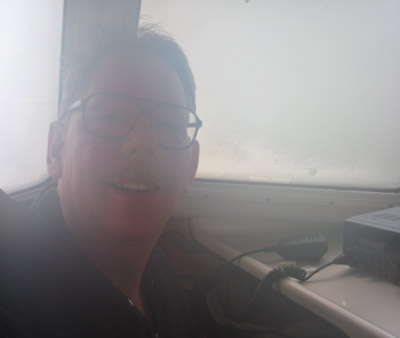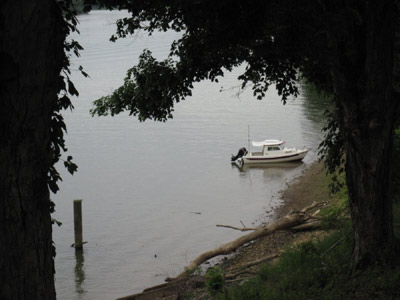
Technically, the term "maritime mobile" doesn't apply to stations operating on inland waterways but in Kentucky and Tennessee this is about as close as it gets to the definition.
When on Kentucky and Dale Hollow lakes, or the Cumberland, Ohio, or Green rivers, Amateur Radio is great fun while on a "get away from it all" two-day voyage.
Click the photos to enlarge.
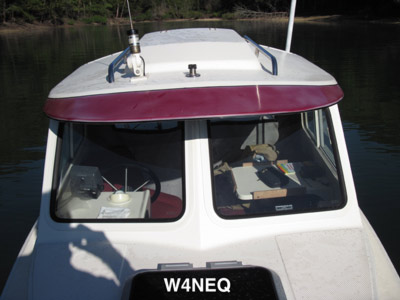
My C-Dory is unusual in our area - a very seaworthy 16-foot boat with enclosed cabin. Calling it a cabin might be somewhat optimistic but it has a pilothouse, a cramped berth, and fabric rear doors - even a rear deck! When sleeping aboard I can relate to the cramped quarters the Apollo crew had. Its distinctive design frequently prompts comments and questions at marinas - "That sure is a cute little boat."
The left photo shows the Marine VHF antenna on top and fiberglass bottom section of the 28 foot aluminum HF vertical on the rear.
Range with 24 gallons of fuel is about 170 miles. Due to the dory-shaped hull design mileage doesn't change much from the 4-knot displacement speed all the way up to planing with full 50 horsepower at 27kts. The previous New Orleans owner visited oil rigs out in the Gulf.
I wanted best performance from the station - limited to the battery-powered 100-watt peak output, I decided that the most practical antenna was a vertical.
When dealing with reduced size antennas, size matters - and matters a lot. The closer you get to a full quarter-wave height the higher the radiation resistance. Higher radiation resistance means a better ratio of radiated power versus energy lost in unavoidable areas such as coil Q and ground or counterpoise resistance.
Although not optimally efficient due to the binary-switched reactive elements, it's hard to beat the convenience of a modern autotuner. Upon sensing RF, it finds the best matching setting in a matter of seconds. Since it also reads the frequency, it checks former settings first. Using latching relays, its idle current is only 18 milliamps - so 8 AA batteries power it.
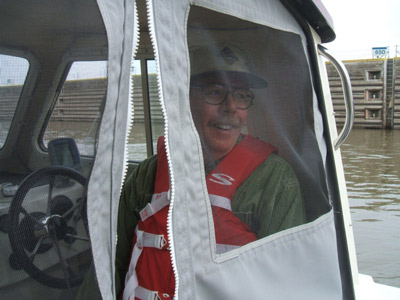
At 40-10 meters, the pole is close to or greater than a quarter wavelength - and pretty efficient. For 75 meters I added a 15 microhenry loading coil to get it in range of the LDG autotuner.
The counterpoise is a 30-foot length of steel cable with an aluminum plate on the end - thrown overboard.
Not shown is how one stands on the the gunwale extending the telescoping antenna sections and tightening the hose clamps. For folks like me who have a touch of vertigo, it can be a bit sporting, but I haven't fallen overboard yet!
The left photo is kinda foggy, but that's life on the water at 6:45 am - just after checking in on 3930 kHz. The Yaesu Ft-450 can be seen at the right.
At Fort Donnelson on the Cumberland river in Tennessee.
73, Chris
Back to W4NEQ main page
